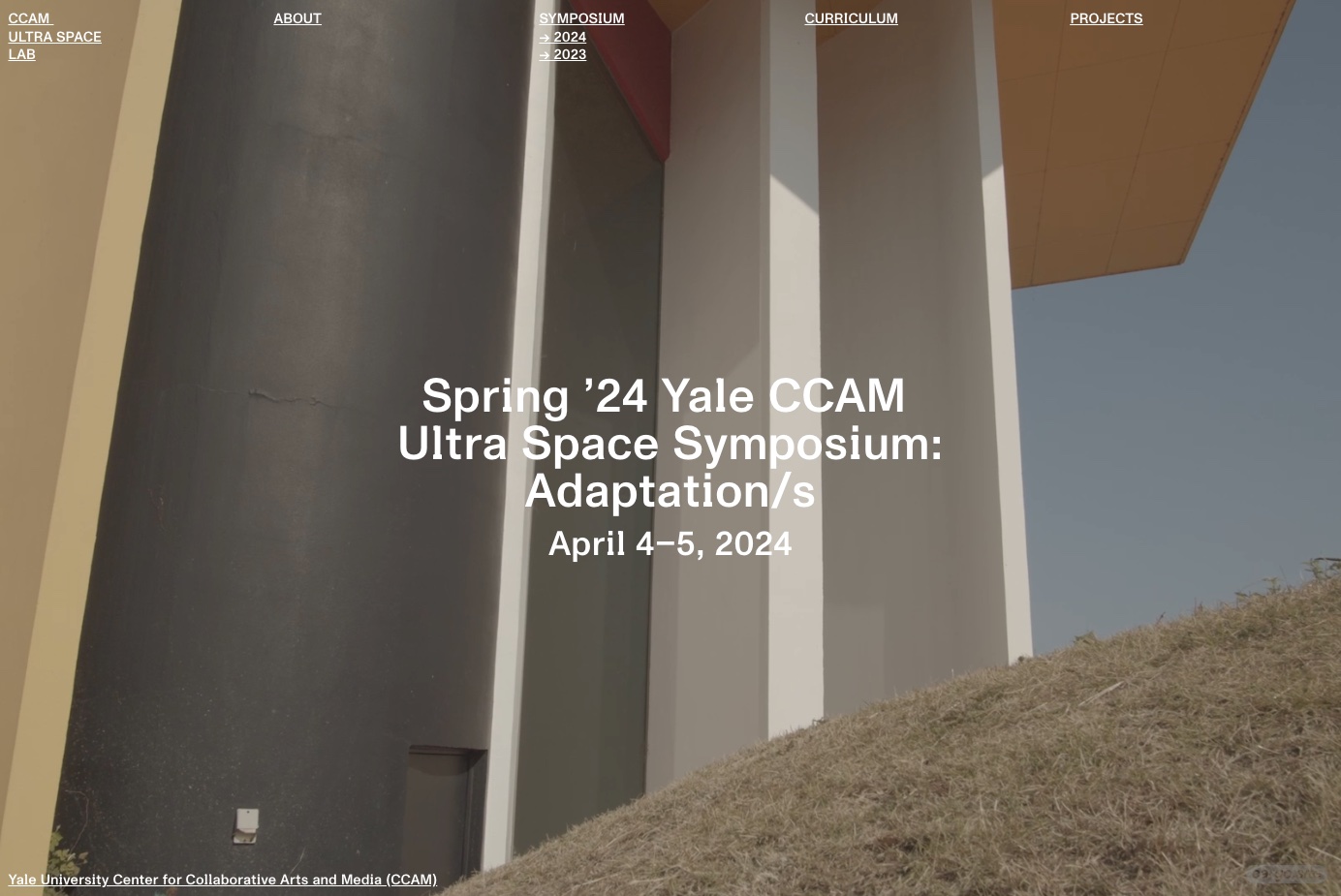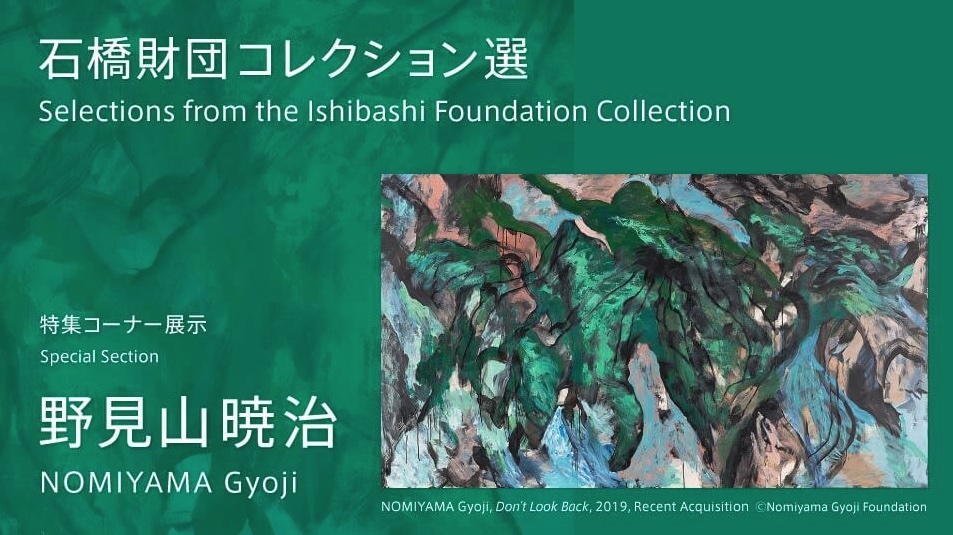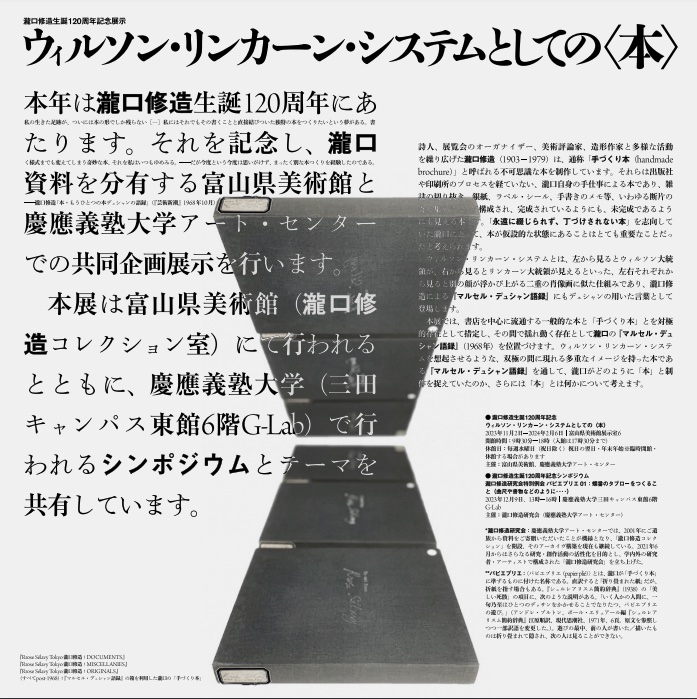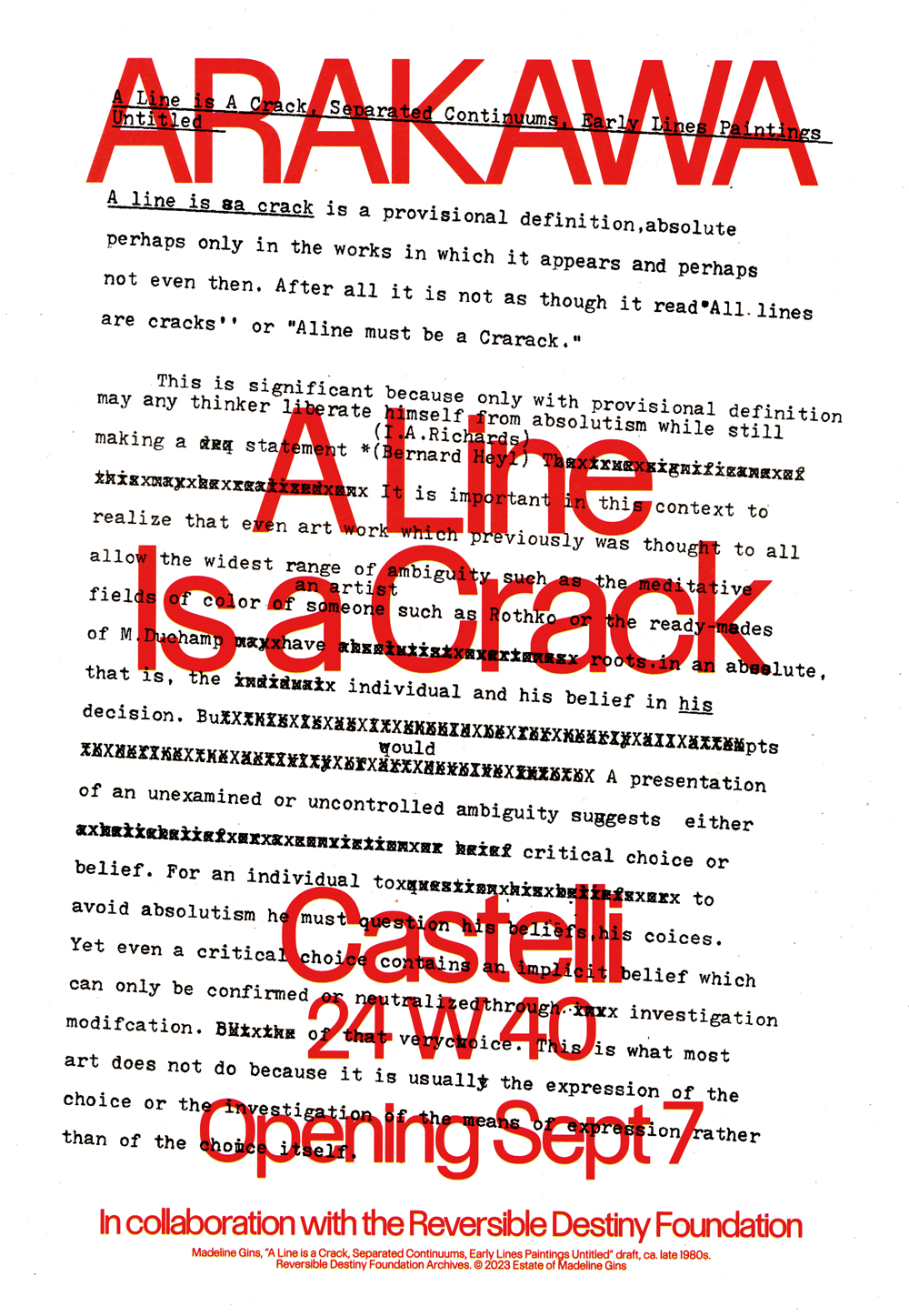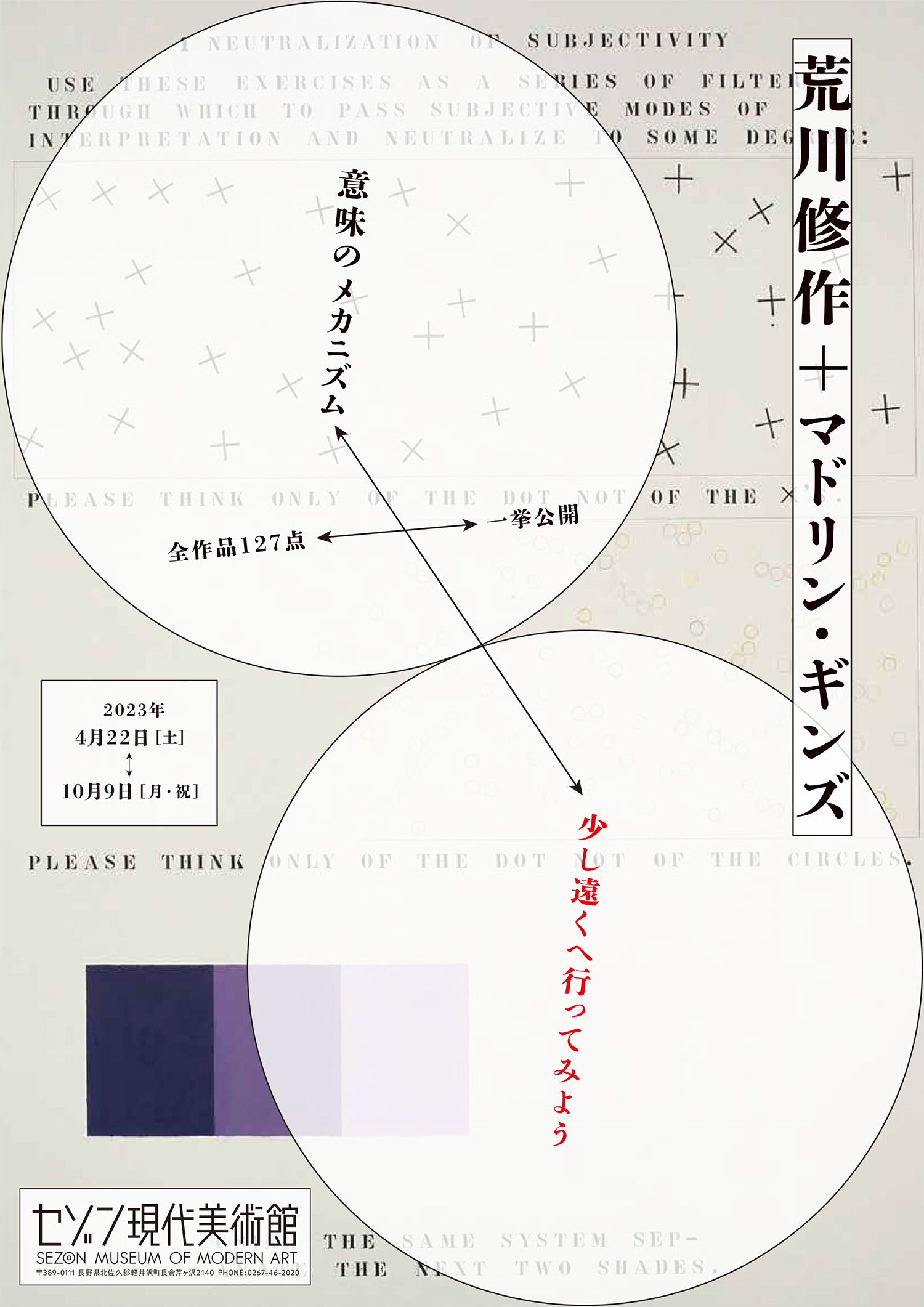ARAKAWA
EARLY DRAWINGS & PAINTINGS, 1960-1963
SEPTEMBER 6 – OCTOBER 11
The Feldman Gallery will exhibit early Arakawa drawings and paintings from 1960 – 1963.
This presentation of Arakawa’s early work at the Feldman Gallery follows the recent controversial exhibition of his collaborations with Madeline Gins at the Guggenheim Museum Soho. That exhibition, Reversible Destiny, provoked extreme reactions in the art press. Representing more than thirty years of theoretical and artistic inquiry, the Guggenheim show consisted of two extensive collaborative projects: the first, large canvas panels from the 1970’s; the second, models, photographs and computer-generated proposal boards from Arakawa and Gins’ more recent, both realized and proposed, architectural work.
Italo Calvino said of Arakawa that he “paints the color of the mind.” Hans-Georg Gadamer has said that he is an artist who “transforms the usual constancies of orientation into a strange, enticing game” and that works of Arakawa call forth in him these words by Paul Celan: “There are songs to sing beyond the human.”
Charles W. Haxthausen, in his essay from the Guggenheim catalogue, has written that “looking at the early work of Arakawa, one might dub him the painter working in the philosopher’s house, for his paintings could be understood as a model — or, rather, as a stimulus — for rethinking some of the most fundamental philosophical questions.”
Haxthausen identifies Arakawa’s early paintings “as the best introduction to the most recent work of Arakawa and Gins: the basic rules of the game are already operative; the major issues are already enunciated; and the paintings themselves are on the whole less daunting to the uninitiated. Those issues concern the nature of perception — perception as a process not merely engaging mind and body but constituting them in a subjective, self-conscious sense and serving as an index of the relationship between the two.”
The Arakawa-Gins collaboration has resulted in two major installations in Japan. The Site of Reversible Destiny – Yoro, a seven acre permanent environmental work erected in 1995 in Gifu Province, averages 8,000 visitors a day. A smaller Reversible Destiny installation at the Nagi Museum of Contemporary Art opened in 1994. Currently Arakawa and Gins are working on plans for a Site of Reversible Destiny City, expected to be constructed on landfill in Tokyo Bay.
Arakawa has exhibited at the Feldman Gallery since 1972.
There will be a reception for the artist on Saturday, September 6, from 6 – 8. Gallery hours: Tuesday – Saturday, 10 – 6. Monday by appointment. For more information contact Rita Macdonald.
(quoted from “Official website”)

